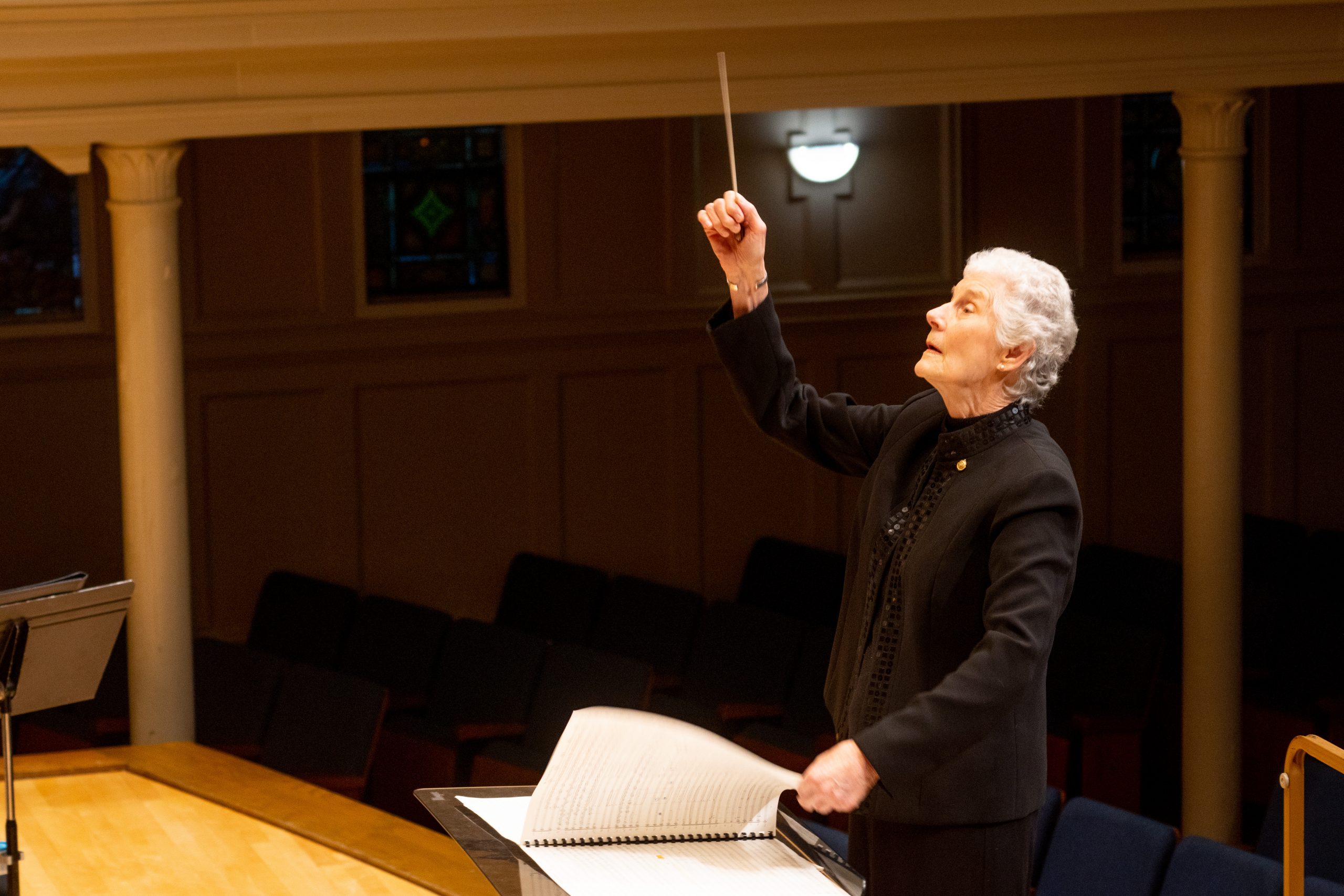With the end of Spring Term rapidly approaching, many ensembles on campus are wrapping up their hectic year of outstanding performances. It has been an incredibly remarkable year: between Kaleidoscope in October and the sprawling masterwork earlier this term, every performer deserves to be celebrated.
Lawrence’s esteemed Symphonic Band and Wind Ensembles took this opportunity to theme their last concert around celebration. On Saturday, May 20, both ensembles took to the Chapel stage to display a diverse, exciting and exhilarating program. World-renowned guest conductor Paula Crider joined for several of the pieces, along with junior alto saxophone player Gabriel Reyes, who won Lawrence’s annual Concerto Competition.

Symphonic Band, conducted by Associate Professor of Music Education and Associate Director of Bands Matthew Arau, kicked off the concert with “Radetzky March” by Johann Strauss. The piece launched into a sturdy, bombastic rhythm following a snare introduction, dynamically trading between serene reeds and splashes of horn. Indeed, it was a march, one that aptly set the celebratory tone that carried through the rest of the concert.
Crider conducted the next piece, “Pacem,” arranged by Robert Spittal. “Pacem” means “peace” in Latin, and Crider’s powerful words when introducing the piece proclaimed this peace: “once we overcome the love of power with the power of love, we will achieve peace.” Through harmonic swells and blossoming cymbals, the music accompanied the last rays of sunset through the Chapel beautifully. It was a standout performance, honoring peace and reminding audience members about the good in the world.
This serene tone was sharply interrupted by the following piece: “Burning the Wicker Man” by Julie Giroux. Crider explained how ancient Celtic lore is often associated with human sacrifices, but since the Celts had no written language, all our understandings of their culture come from their enemies: the Romans. Giroux sought to reclaim and celebrate this culture. Symphonic Band captured this reclamation perfectly, juggling moments of tense and fluid instrumentation. I would like to point out the percussion especially here: they maintained an alluring 12/8 rhythm throughout the piece.
After celebrating several of the graduating seniors in the ensemble, Arau returned to the stage to conduct Symphonic Band’s final piece, “Of Our New Day Begun” by Omar Thomas. This piece was composed to honor the lost lives of nine Black civilians following the Charleston, S.C. church shooting in 2015. Utilizing a melody from the Black national anthem “Lift Every Voice and Sing,” as well as a powerful introduction listing the names of every civilian murdered, the piece documented a haunting and dissonant but ultimately celebratory unity. As the last of the piece echoed around the Chapel, I was moved to tears; it truly was my favorite moment of the evening.
Following a brief intermission, Wind Ensemble and Associate Dean of the Conservatory, Kimberly-Clark Professor of Music and Director of Bands Andrew Mast came onstage to perform Wind Ensemble’s set. The first piece, a world premiere, was by former oboe professor Howard Niblock, titled “Macro-Cosmic Rhythms.” Niblock came onstage to explain the repetitive and meta-temporal qualities of the piece, experimenting to capture massive expanses of eons through music. It indulged in two contrasting sections across its 15-minute runtime; through two sections of rumbling bass and intergalactic harp, it was one of the most memorable pieces of the evening.

Crider returned to the stage to conduct one last piece, “English Dances, Set II.” Across its four movements, catchy melodies and whirring reeds darted across the stage, dancing regally between faster and slower moments. Underpinning this set was Crider’s effusive and poised conducting, leaving an impression on the audience.
Reyes entered the stage with bombastic applause to perform “Diversion for Alto Saxophone and Concert Band” by Bernhard Heiden. Across its runtime, Reyes kept incredible technique atop a constantly shifting harmonic landscape. He performed effortless licks and arpeggios smoothly that kept my interest keenly. It was an astounding and celebratory moment.
Another round of gratitude went to the seniors graduating in Wind Ensemble, highlighting the diverse accomplishments of each of them. The final piece of the night captured this diversity aptly: “Dionysiaques” by Florent Schmitt.
As a fantasia, the piece sharply jolted from moments of ecstasy to somberness, never staying in one place for too long. It matched the dogma of Wind Ensemble: while the performers may shift—and the world alongside them—at the core lies genuinely extraordinary talent and art. That is something worth celebrating.

